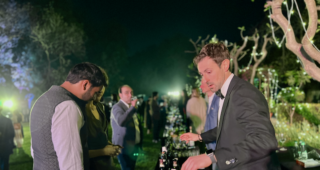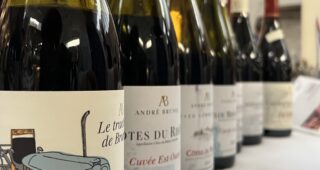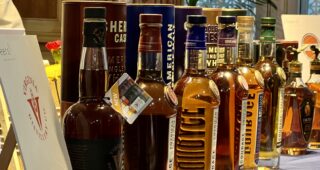Italy is among top 3 wine producers of the world. One of the country’s important wine regions is Friuli Venezia Giulia (FVG) located on its north-eastern tip. The region is relatively small as compared to Italy’s most other wine regions but packs quite a punch with its diverse range of wines.
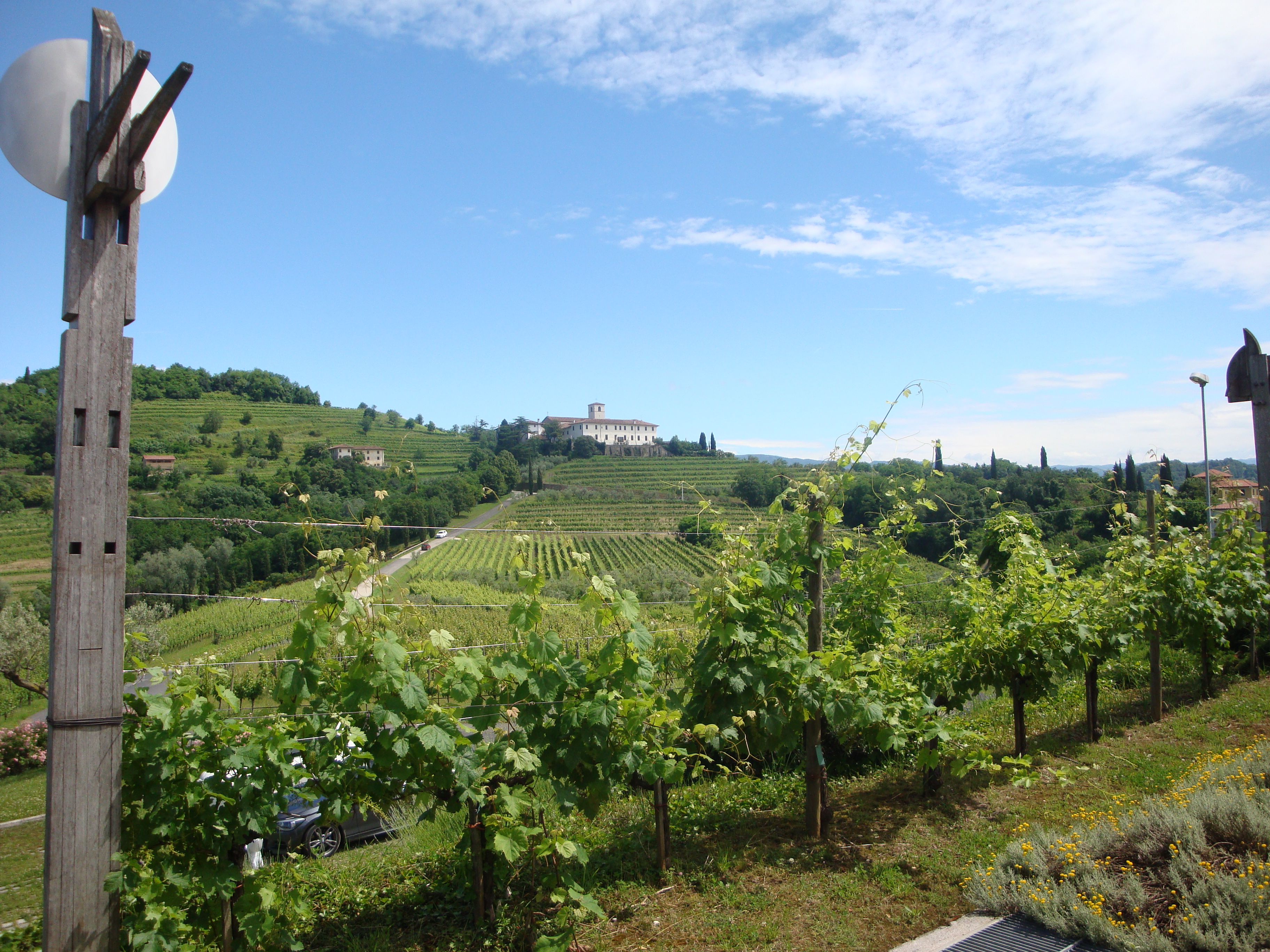
I explored FVG in the summer of 2016 as I travelled southwards from Austria after attending an Austrian wine festival. Not only was FVG the closest point of my entry into Italy, I also had a close family friend living near the major Friulian town of Udine who had generously offered to host me in his region. An earlier blog post details my overall experience in FVG including its wine regions and wine varieties.
Friuli Venezia Giulia: A Snapshot
- 4 DOCGs and 10 DOCs.
- More famous for its white wines but also some unique red wines.
- Friulian whites are identified as clean, fresh and fruity while the reds are intense yet easy-drinking even at a young age.
- Major White Grapes
- Native: Tocai Friulano, Ribolla Gialla, Verduzzo Friulano, Picolit
- International: Gewürztraminer, Müller-Thurgau, Riesling, Riesling Italico (Welschriesling) , Chardonnay, Pinot Blanc, Pinot Gris, Sauvignon Blanc.
- Major Red Grapes
- Native: Refosco, Pignolo, Schioppettino, Tazzelenghe, Franconia (Blaufränkisch).
- International: Cabernet Franc, Cabernet Sauvignon, Merlot, Pinot Noir, .
Privileges of a local host
Edoardo Zentner, my decades-old family friend owns a well-appointed house near Udine, within easy reach from most wineries of the region. Since Colli Orientali (eastern hills of Friuli) comes under the Udine province, my wine expedition centered around that region. Besides that, I also experienced the famed Orange wines of Collio that I will be detailing in a subsequent post.
A Primer before the Expedition
The first evening itself at Edoardo’s place turned out to be a primer of sorts on FVG’s wines. I tasted several of them that Edoardo had lined up around dinner. We started with a Ribolla Gialla-Chardonnay Spumante from Perusini winery and went on to several others that included a Sauvignon Blanc, Refosco and Picolit.
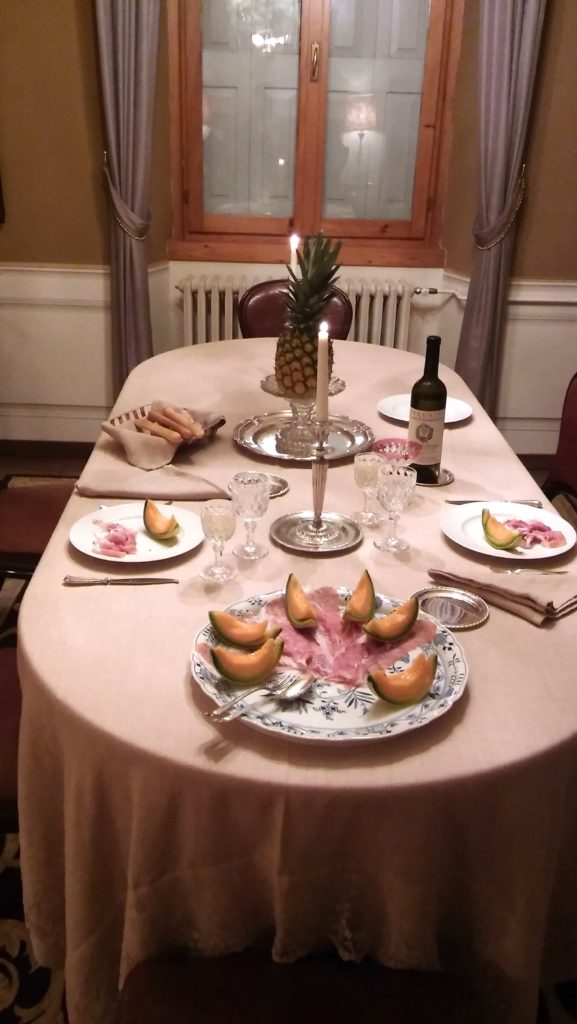
The tasting set the tone for the next few days, where we visited wineries of different scales. With great foresight, Edoardo had already fixed up appointments with the wineries that we visited.
Livio Felluga
One of the most prominent wineries of FVG, Livio Felluga spans five generations, first in the Austro-Hungarian Empire and then in Italy. It was in the late 1930s that Livio Felluga, the family patriarch moved to Friuli.
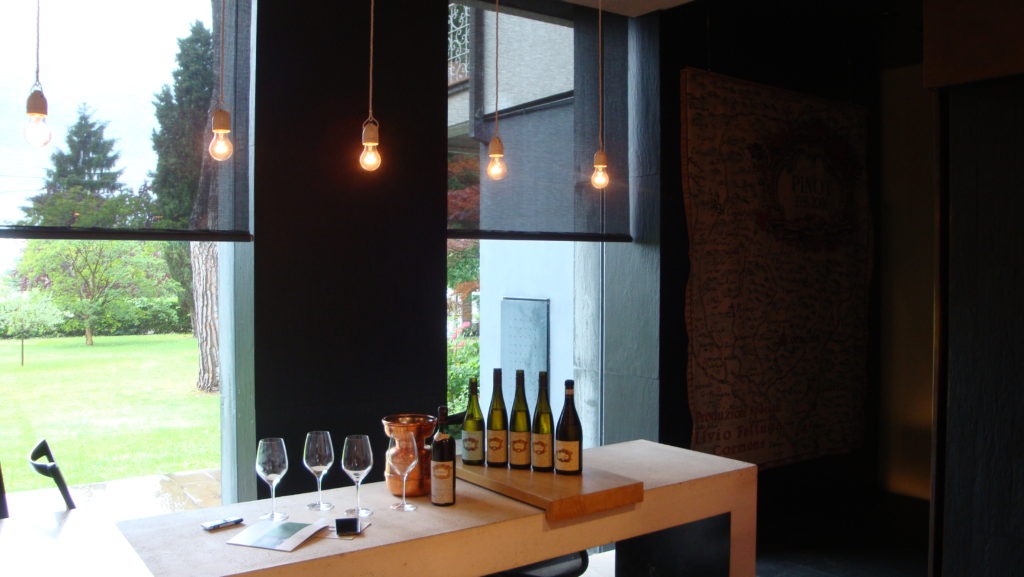
In the 1950s, Livio purchased his first few hectares of vineyard at Rosazzo, an area now recognised as one of the finest viticultural zones of the region. Today, Livio Felluga estate extends over more than 160 hectares of hill country in Collio and Colli Orientali. Their attractive map label portrays the hills and slopes of their viticultural region and was created by Livio Felluga himself in 1956.

In 2016, Livio Felluga the patriarch expired at the age of 102. His four children Maurizio, Andrea, Elda, and Filippo represent the fifth generation. During my visit to their cellars at Brazzano di Cormóns we were hosted by Andrea at a tasting. Later, we sampled some of the wines around lunch at their in-house restaurant situated close to the cellars.
Some of my favourites wines from Livio Felluga were:
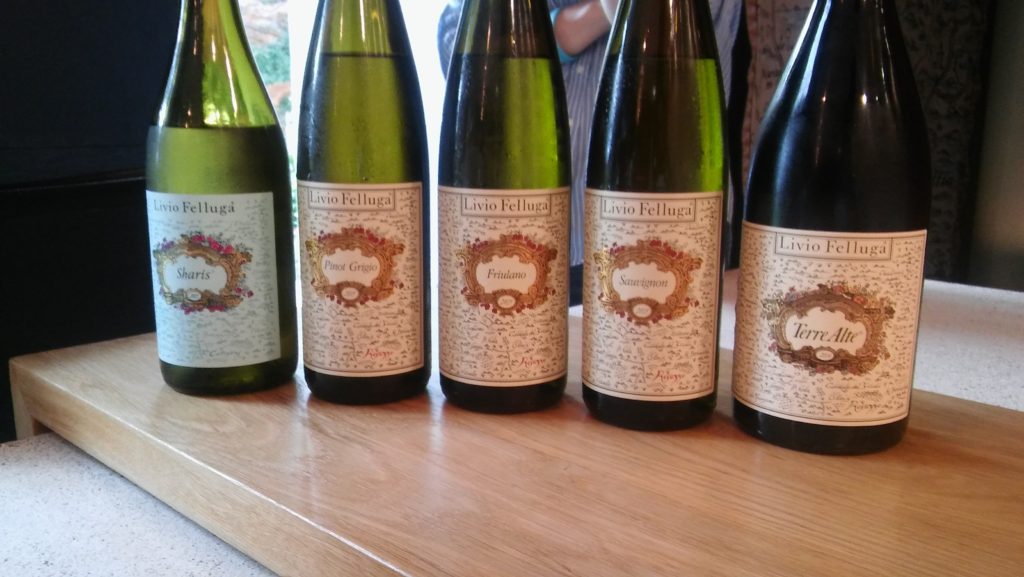
Livio Felluga Terre Alte Bianco, DOCG Rosazzo
(Tocai Friulano, Pinot Bianco and Sauvignon Blanc)
A complex wine with white flowers and tree fruit aromas. An exuberant palate of tropical fruits and spice that makes it equally exciting to pair with food as like an aperitif.
Livio Felluga Sharis, IGT Bianco “delle Venezie”
(Chardonnay- Ribolla Gialla)
A fresh and light bodied wine with a clean-fruity palate.
Livio Felluga Illivio, DOC Friuli Colli Orientali
(Pinot Bianco – Chardonnay – Indigenous white grape)
Notice the name that can be split to read as “Il Livio” which means “The Livio”. This wine is a tribute to their family patriarch. Befittingly, it comes across as a full-bodied wine with complex aromas and flavours.
Perusini
Perusini is another of FVG’s iconic wineries. They are is credited with preserving Friulian native grapes during the times when French varietals were considered fashionable. One of these was Picolit, which was revived in the nineteenth century by their ancestor Giacomo Perusini who was responsible for planting it in the Colli Orientali region.
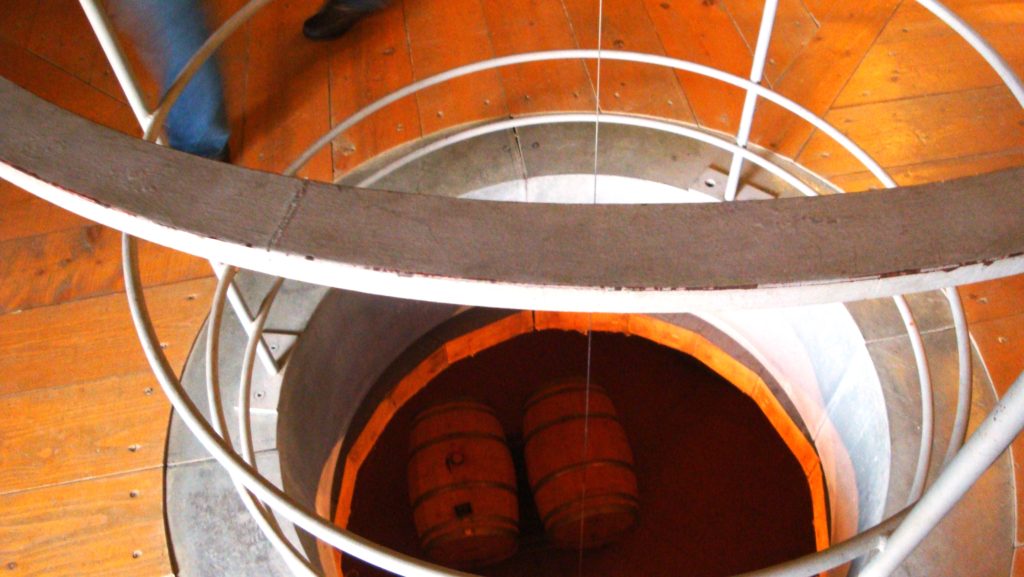
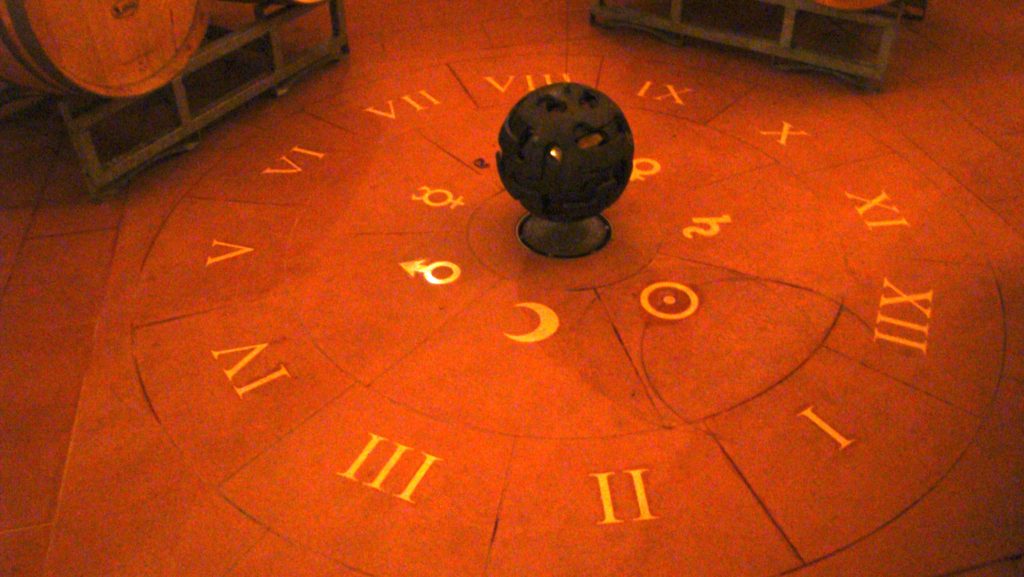
After Giacomo’s premature death in the First World War, his wife Giuseppina, a painter and writer, continued his work and re-launched Friulian wines in the Italian market and abroad. Their sons Gaetano and Giampaolo continued the family legacy by expanding upon the research on local traditional farming. Today, their winery is run by Teresa, Giampaolo’s daughter with the help of her husband Giacomo de Pace and their three children Carlo, Tommaso and Michele.

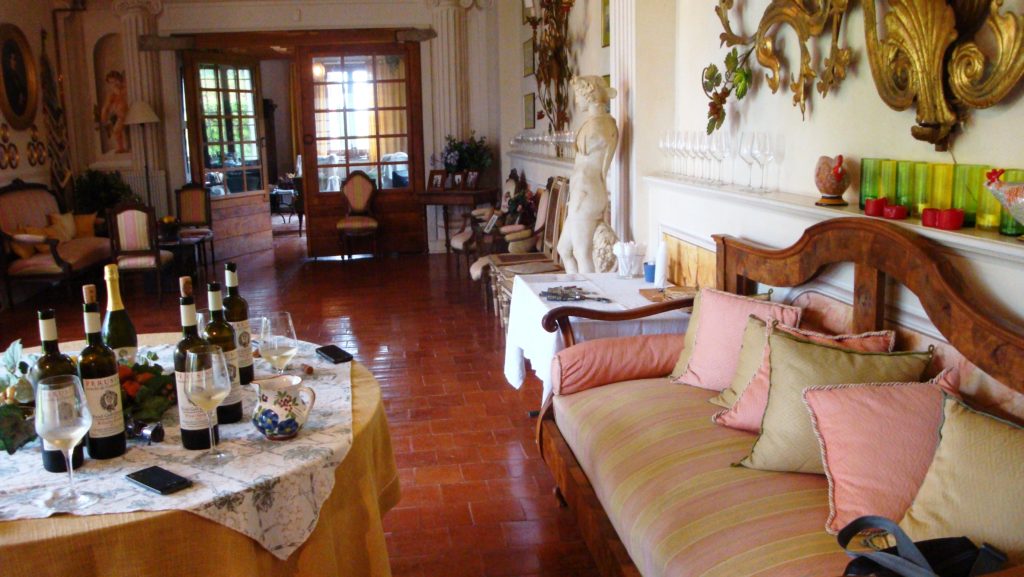
Perusini winery is situated in the hills of Gramogliano, renowned for its beautiful landscape and an ideally suited terroir. Gramogliano is popularly recognised as a “superior cru” of Colli Orientali.
Perusini’s unique cellar-tower designed by architect Augusto Romano Burelli has a Foucault pendulum surrounded by murals, paintings and sculptures by renowned artistes. At the winery we were hosted by Carlo de Pace, a young and enterprising member of the Perusini family who looks after their sales.

Perusini Ribolla Gialla 2015, DOC Friuli Colli Orientali
Ribolla Gialla is one of the top white grapes of Friuli. Perusini Ribolla Gialla had subtle aromas of red apples and herbs. It had a light refreshing palate, a balanced acidity and a medium finish.
Perusini Friulano 2015, DOC Friuli Colli Orientali
Friulano is another of FVGs most prominent white wines. Made from Tocai Friulano grapes, the wine itself is called “Friulano” in accordance with European Union directives that prohibit the use of the term “Tocai” lest it is confused with “Tokaj” or “Tokay” from Hungary.
Perusini’s Friulano had refined aromas of white flowers and tropical fruits. It was light bodied and dry on the palate with kiwi and guava flavours finishing on a lingering note.
Dorigo
If I were to spontaneously recall a “rockstar” winemaker that I’ve met, Dorigo winery’s Alessio Dorigo would be among the foremost names to cross my mind. After all how many winemakers will offer to strum the guitar while you taste their wines!


We enjoyed Alessio’s charismatic company around a tasting of his wines that have won many awards worldwide. These include awards by Wine Spectator, Decanter and the “Tre Bicchieri” (three glasses) as many as 20 times by Gambero Rosso.
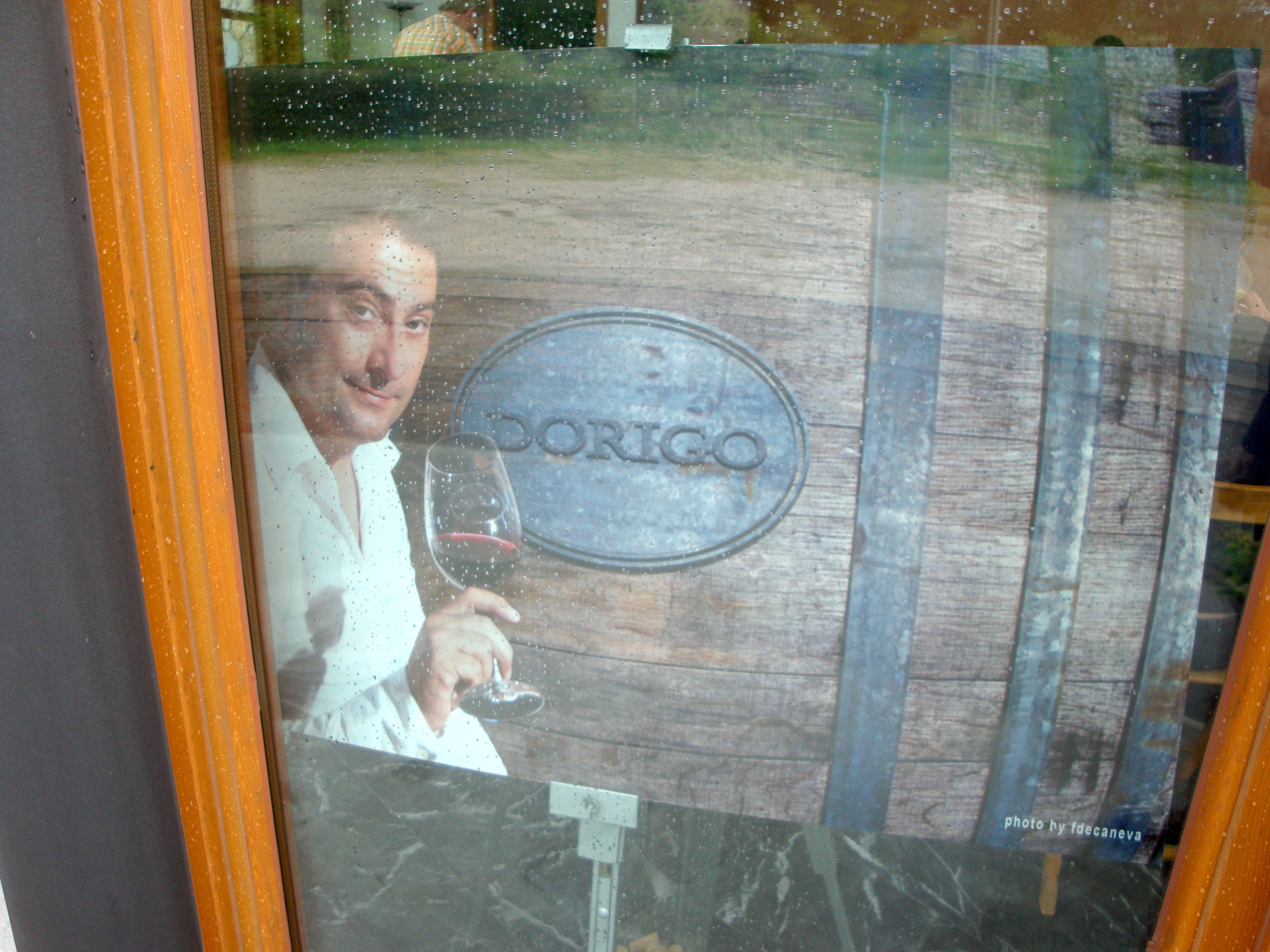
It was in 1966 that Alessio’s father Girolamo Dorigo bought his first vineyards in Colli Orientali, realising the great potential that the region had for traditional cultivation. Today, Alessio continues his father’s legacy by defending indigenous varieties alongside maintaining an excellent quality of production.
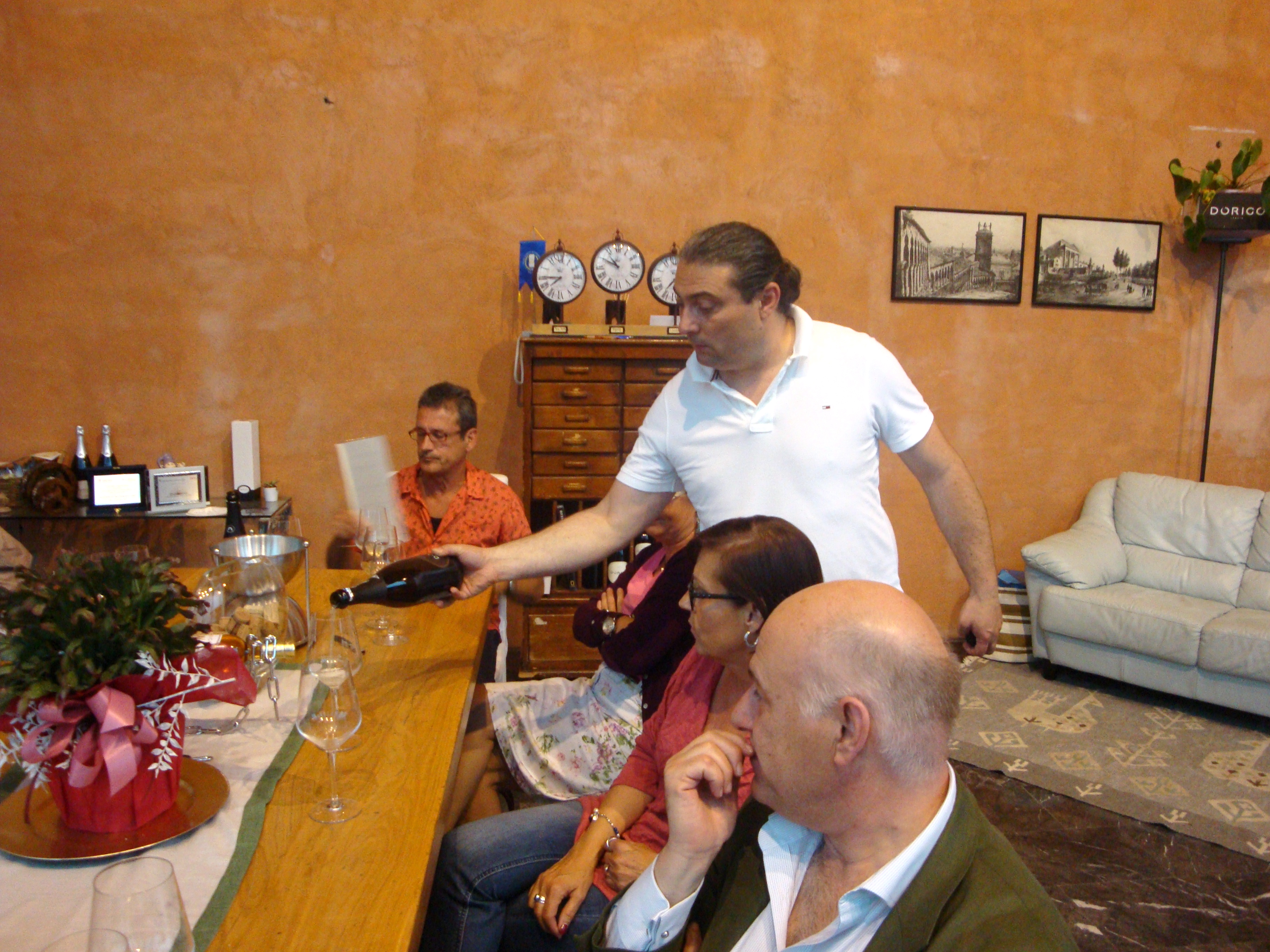
Interestingly, Dorigo wines had been available in India earlier but discontinued due to the then changing market dynamics. Alessio is now keen to export to India again and I sincerely hope that he succeeds, as I simply loved his wines.
Dorigo Spumante Brut
Dorigo Spumante Zero Dosage, Blanc de Noir
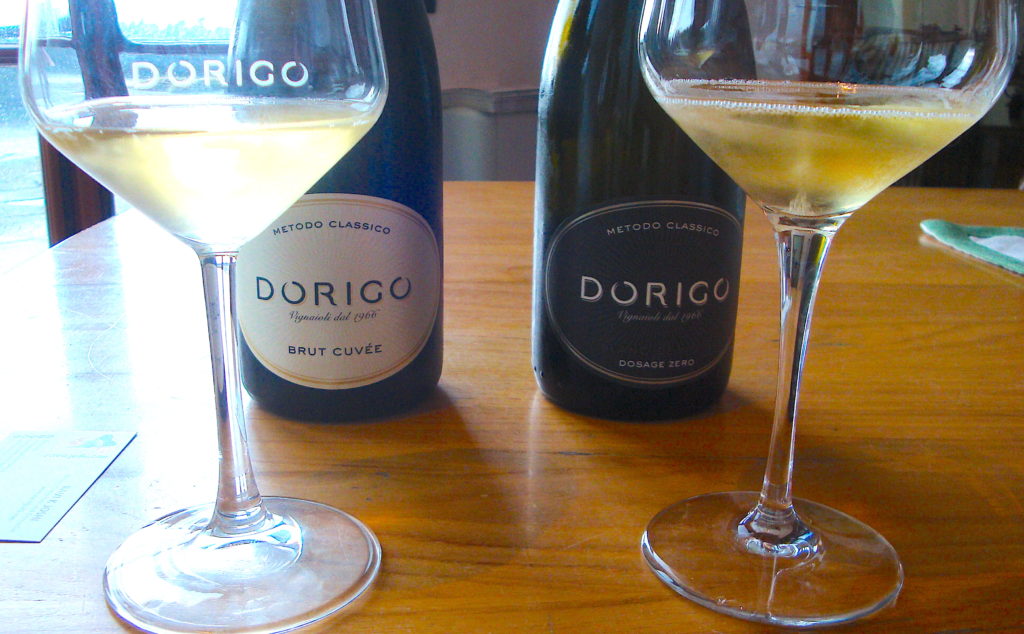
Both these sparkling wines are made using the traditional method i.e. secondary fermentation in the bottle. While the Spumante Brut is a blend of Chardonnay-Pinot Nero and aged for 2 years, the Blanc de Noir is made from Pinot Nero grapes and aged for 5 years on the lees.
Both wines were delightful in their own sense. The Spumante Brut was refreshing and autolytic, while the Blanc de Noir was highly complex with smoky aromas and a vinous palate finishing on a mineral note.
Dorigo Ronc di Juri Sauvignon Blanc 2013, DOC Friuli Colli Orientali
Made with high quality Sauvignon Blanc grapes from selected parcels, this is a barrel fermented age-worthy Sauvignon Blanc. The wine had peach, pear and mixed herb aromas with a generous structure and an outstanding length.
Dorigo Montsclapade Rosso 2011, DOC Friuli Colli Orientali
Montsclapade means “split mountain” in Friulan dialect. This is a classical Bordeaux blend of Cabernet Sauvignon, Cabernet Franc and Merlot where the winemaker has purposefully avoided adding native Friulian grapes to preserve the wine’s distinct character. The wine is aged for 24 months in barrels and comes across as a powerhouse with silky tannins, intense red fruits, and tobacco notes.
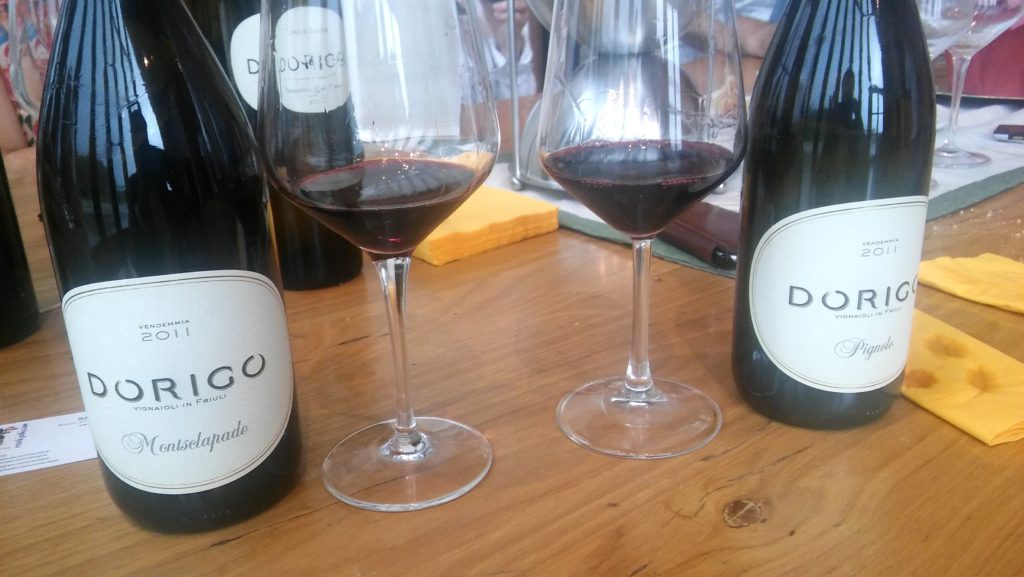
Dorigo Pignolo 2011, DOC Friuli Colli Orientali
Pignolo is one of the most prominent Friulian red grapes that almost disappeared from Friuli around 50 years ago. Dorigo claims to be the first winery to have believed in the variety’s potential, planting a vineyard in 1973 with Pignolo scions coming from vines more than 100 years old. Pignolo wines are invariably high in tannins and have great potential for ageing.
Dorigo Pignolo 2011 had restrained aromas of red berries and spice. On the palate it had a great structure with rounded tannins and flavours of dense red berries and liquorice.
Massimo Pividori
Massimo Pividori is an artisanal wine producer located in Nimis, a town and comune in the province of Udine. The winery was founded by Sergio Pividori in 1967 and later converted into a farmhouse called Agriturismo Da Basan offering hospitality services apart from producing wine. As a result, they have developed an excellent eco-system to showcase Friulian wines and cuisine in their full glory.
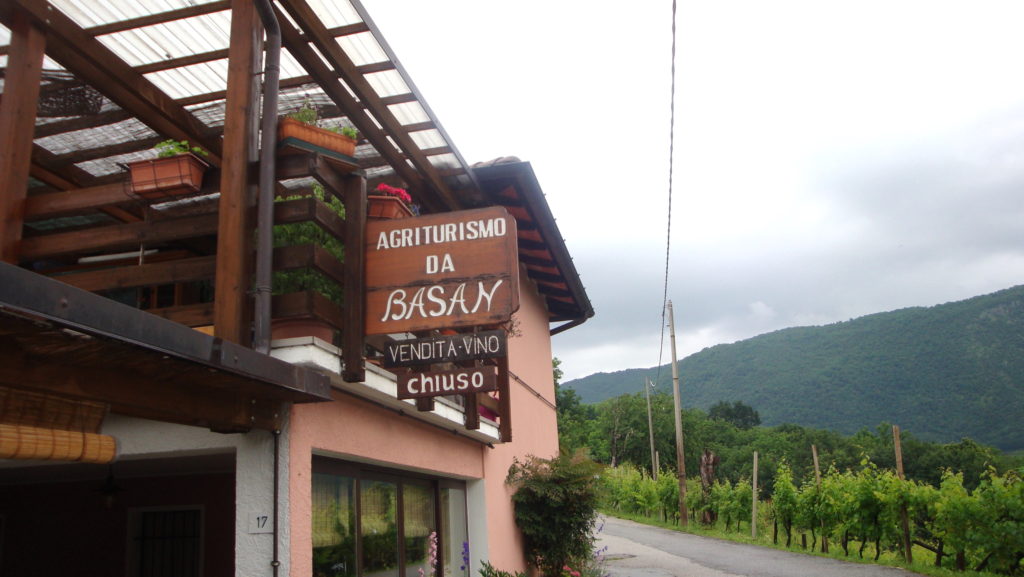
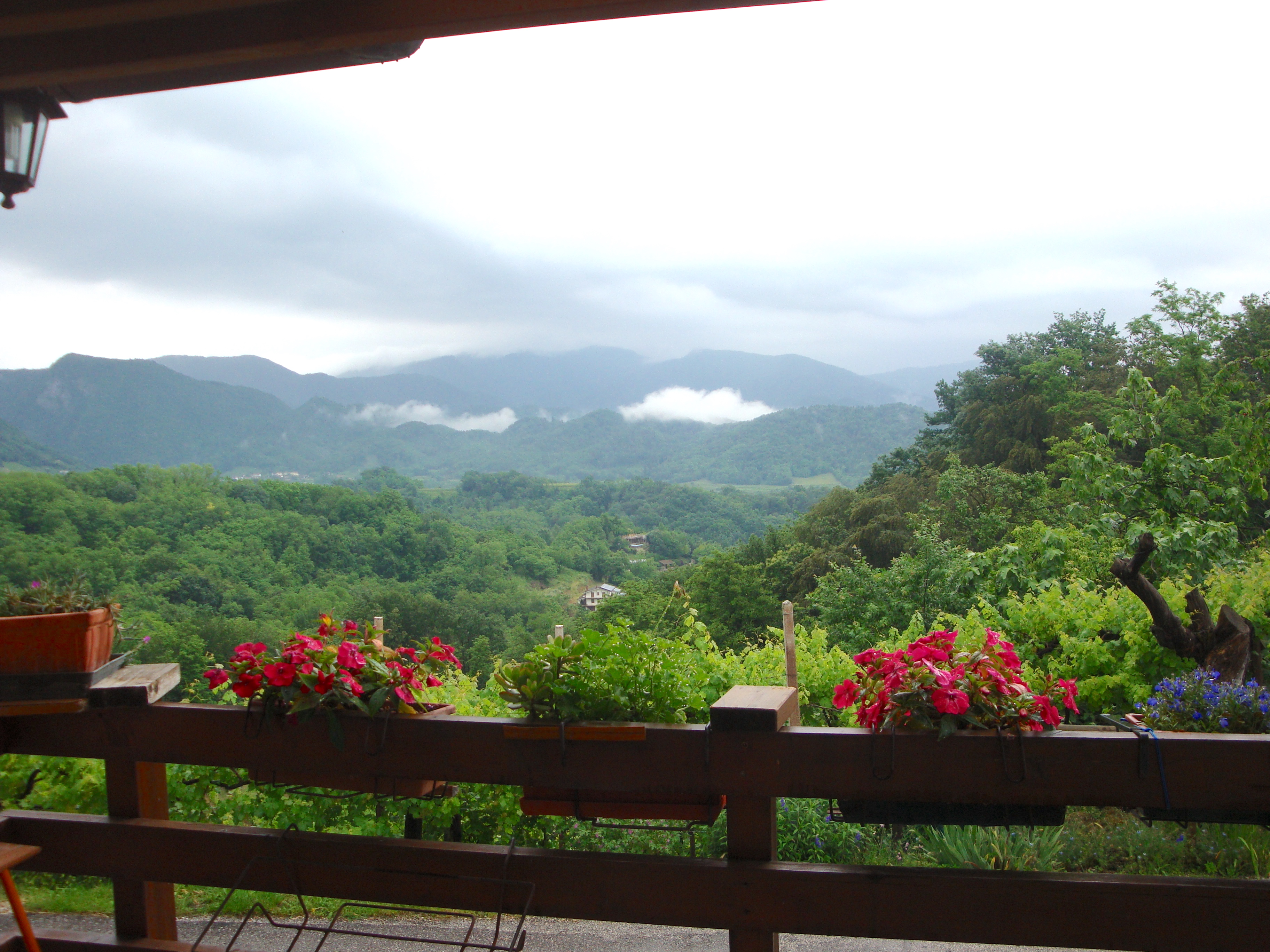
Massimo Pividori produces small volumes of wines, mostly from autochthonous varietals. Their white wines include the fine Picolit and Ramandolo D.0.C.G., sweet wines made from grapes that are left to dry naturally on the vines. They also produce an interesting house blend of a dry white wine made from five different grape varieties.
I tasted several of their wines with Massimo Pividori himself and thanks to Edoardo again, language was never a barrier.
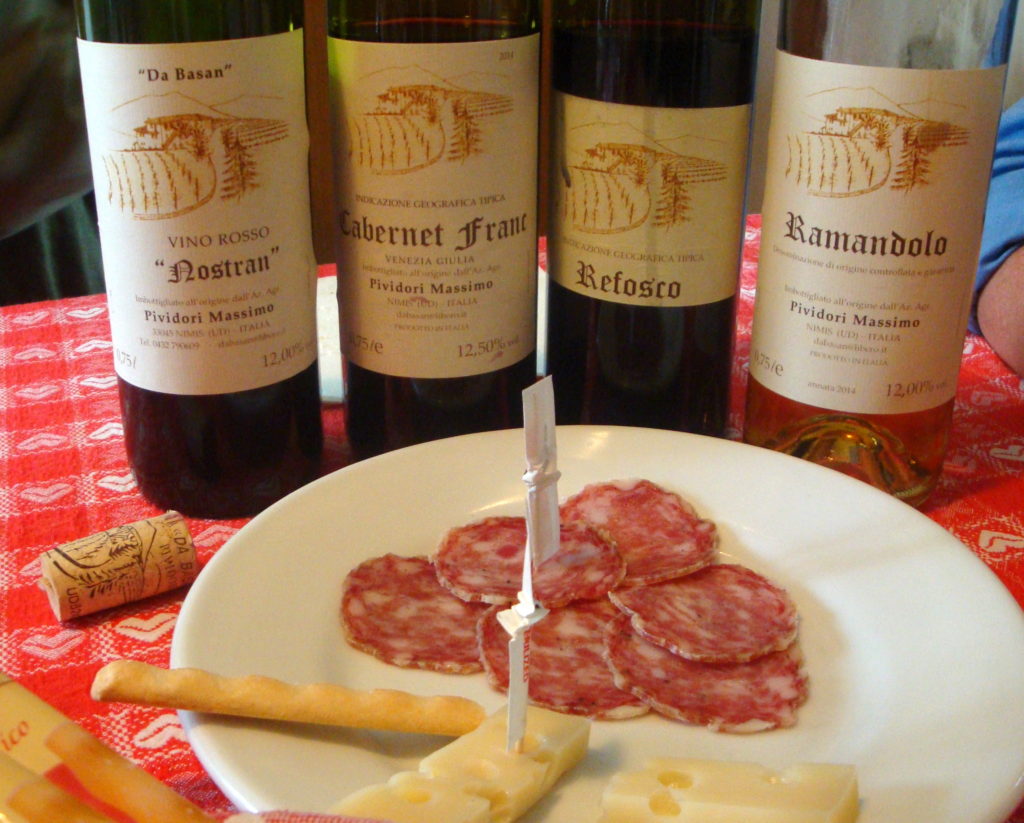
Da Basan Vino Rosso “Nostran”
This “house wine” by Massimo Pividori is a blend of five different grape varieties including Verduzzo Friulano, Refosco, Merlot, Franconia and Corvino. It was an easy-drinking wine with red berries flavours, an appreciable structure and a medium finish.
Massimo Pividori Cabernet Franc, IGT Venezia Giulia
Cabernet Franc is usually identifiable with Bordeaux red wines, but single varietal Cabernet Franc is not uncommon either, FVG producing a decent number of them.
Massimo Pividori’s Cabernet Franc had leafy, spicy aromas followed by a well-structured palate of dark fruits and a dry finish.
Massimo Pividori Refosco, IGT Venezia Giulia
The Colli Orientali region is highly renowned among others for its red wines made from Refosco dal Peduncolo Rosso grapes. “Peduncolo Rosso” means “red stem” referring to the varietal’s clusters having a red stem (peduncle).
Massimo Pividori’s Refosco came across as an expressive wine with wild berry and spice aromas. It had a powerful palate with rounded tannins and a lengthy finish.
Massimo Pividori Ramandolo DOCG
This one was the pièce de résistance of the day. Ramandolo DOCG wines are made from Verduzzo Friulano (also called Verduzzo Giallo) grapes and can compete well with their other famed “noble rot” counterparts like Sauternes/Barsac and Tokaji wines.

Massimo Pividori Ramandolo DOCG wine had honey, liquorice and caped gooseberry aromas supported by a well balanced palate of ripe apricots, dried fruits and white pepper.
Le Vigne di Zamò
Located in the Rosazzo hills very near to the Abbazia di Rosazzo (Rosazzo Abbey), Le Vigne di Zamò started off as a Tavern in 1924. In 1978, they purchased their first vineyards in the Rocca Bernarda hills, later renting more vineyards in Rosazzo and Buttrio. No wonder that the Zamò family highlights one of their greatest virtues as being able to draw from three different terroirs.
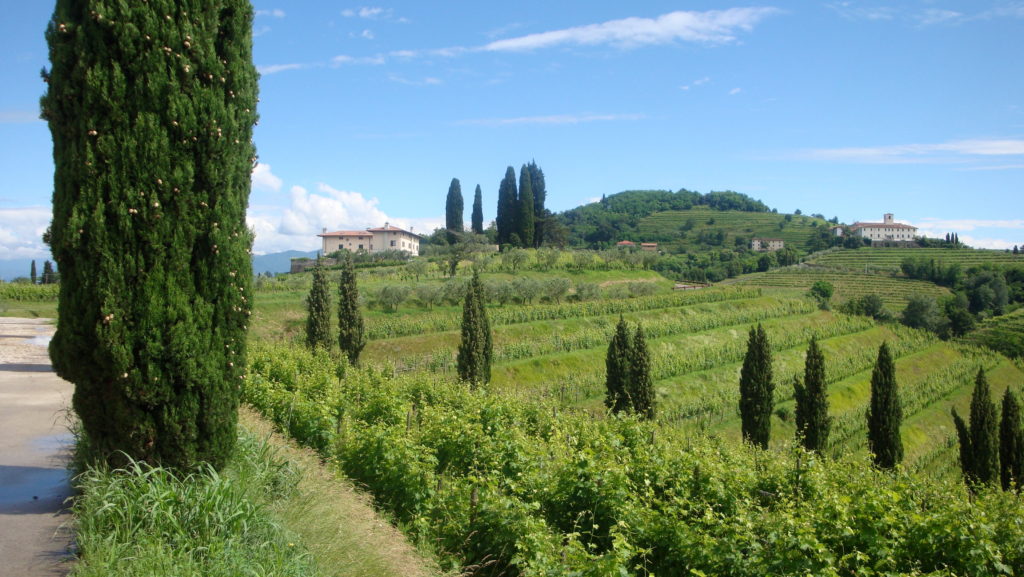
Zamò winery is a good example of organic growth alongside respect for nature. They pay close attention to the phases of grape harvest as well as adapting organic viticultural practices. Also, despite FVG being a predominantly white wine region, Zamò has invested considerably in red wines with equal dedication. Of the 65 hectares of vineyards owned and rented by them, a good 40% are occupied by red grape varieties, a percentage which is definitely above the regional average.
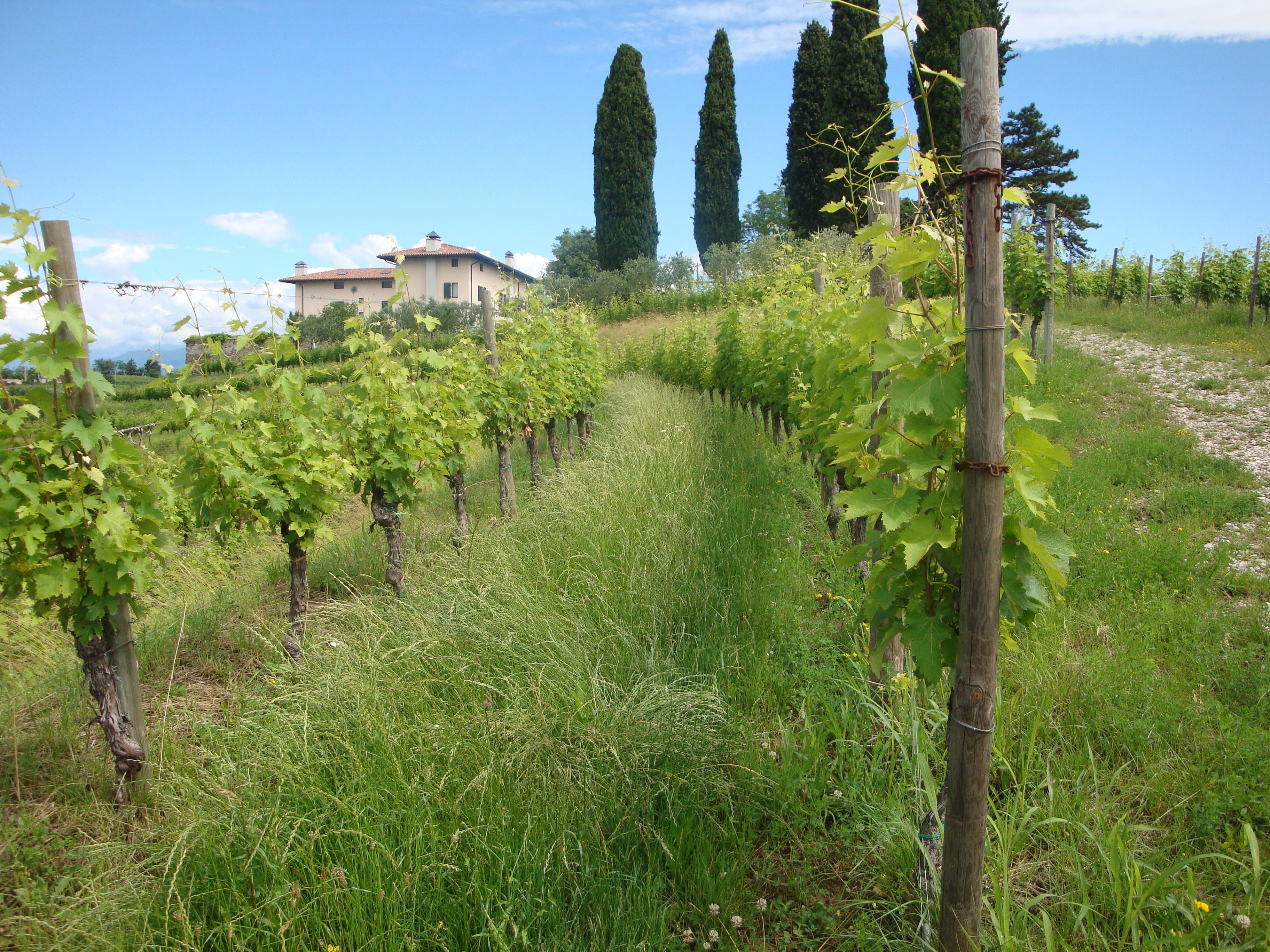
The beautifully located Zamò winery on the Rosazzo hills is a treat to the eyes as much as their wines are a treat to the palate. Some of my best liked wines from Zamò:
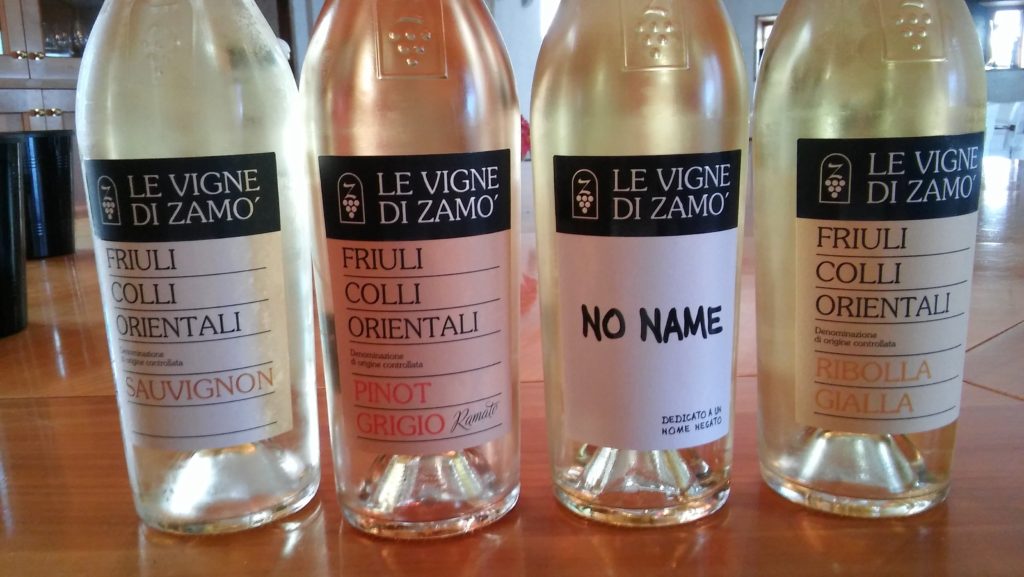
Le Vigne di Zamò Ribolla Gialla, DOC Friuli Colli Orientali
A medium-gold coloured wine with an expressive nose of tree fruits. It had balanced acidity with a fruity palate complemented by a distinctive toastiness on account of “sur-lie” ageing for eight months before bottling.
Le Vigne di Zamò Pinot Grigio Ramato, DOC Friuli Colli Orientali
Ramato is a historical winemaking style from Friuli related to Pinot Grigio grapes. The term itself means “coppered” in Italian and arises from the hue that the wine acquires when crushed Pinot Grigio grapes are kept in contact with the grape skins for a while.
Zamò’s Pinot Grigio Ramato had an onion-skin colour with apricot and toasted almond aromas. On the palate it was full bodied with a perception of light tannins and a long finish.
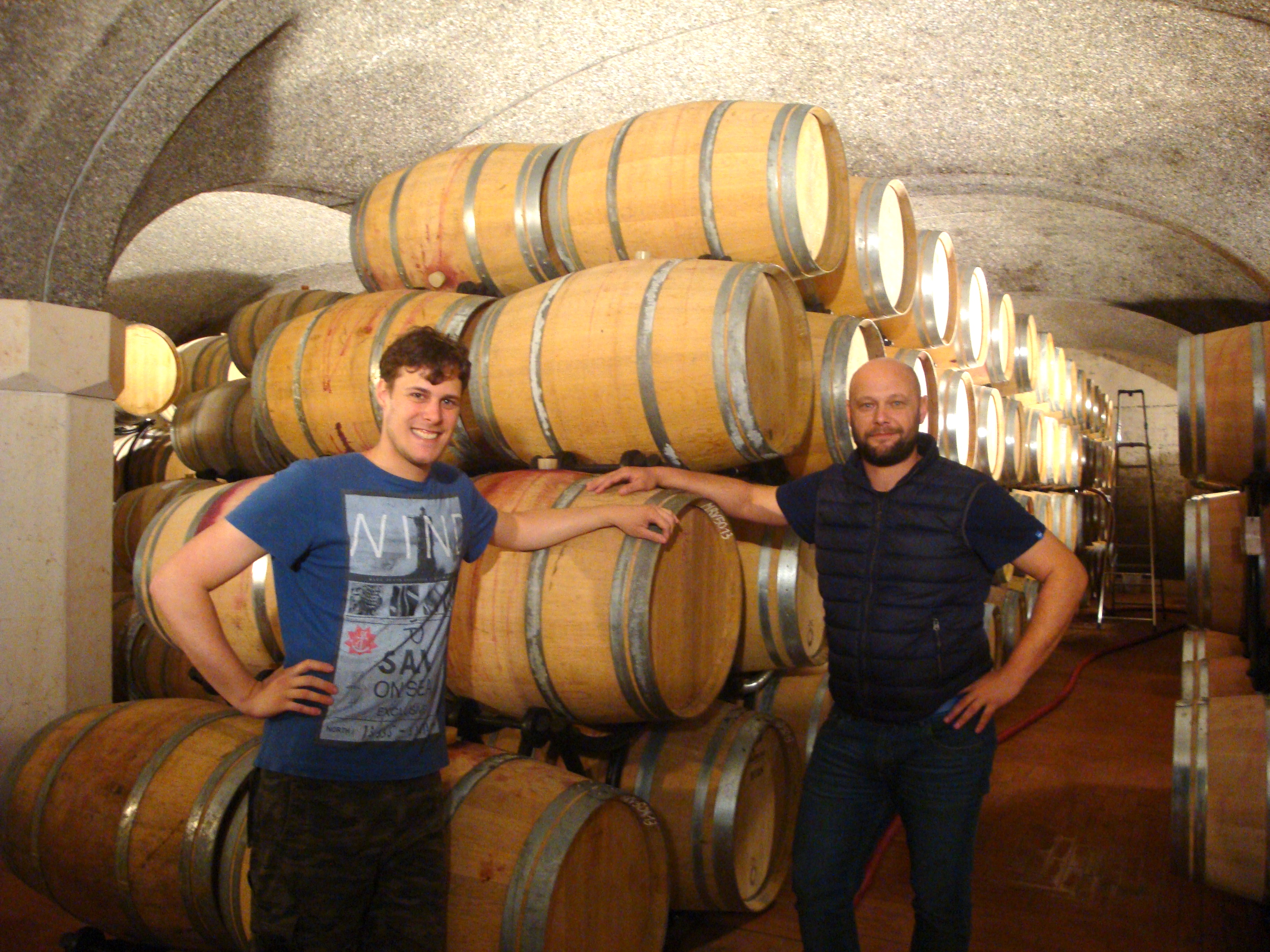
Le Vigne di Zamò “No Name”, DOC Friuli
Why on earth would someone name a wine as “No Name”? The story goes like this:
In 2009 the EU prohibited the use of the prefix “Tocai” in Friuli’s traditional “Tocai Friulano” wines lest it was confused with the historical Tokaji wines from Hungary. The Zamò family asserted their Friulian pride by not renaming their affected wines as just “Friulano”. They decided to call it “No Name” on the premise that the quality of their wine was not dependent on any naming convention.
No Name came across as a great expression of its terroir with citrus aromas and a fresh refined palate. The wine is made with accurately selected bunches and macerated in a noble gas atmosphere separately for different vineyards before ageing and blending.
Le Vigne di Zamò Schioppettino DOC Friuli Colli Orientali
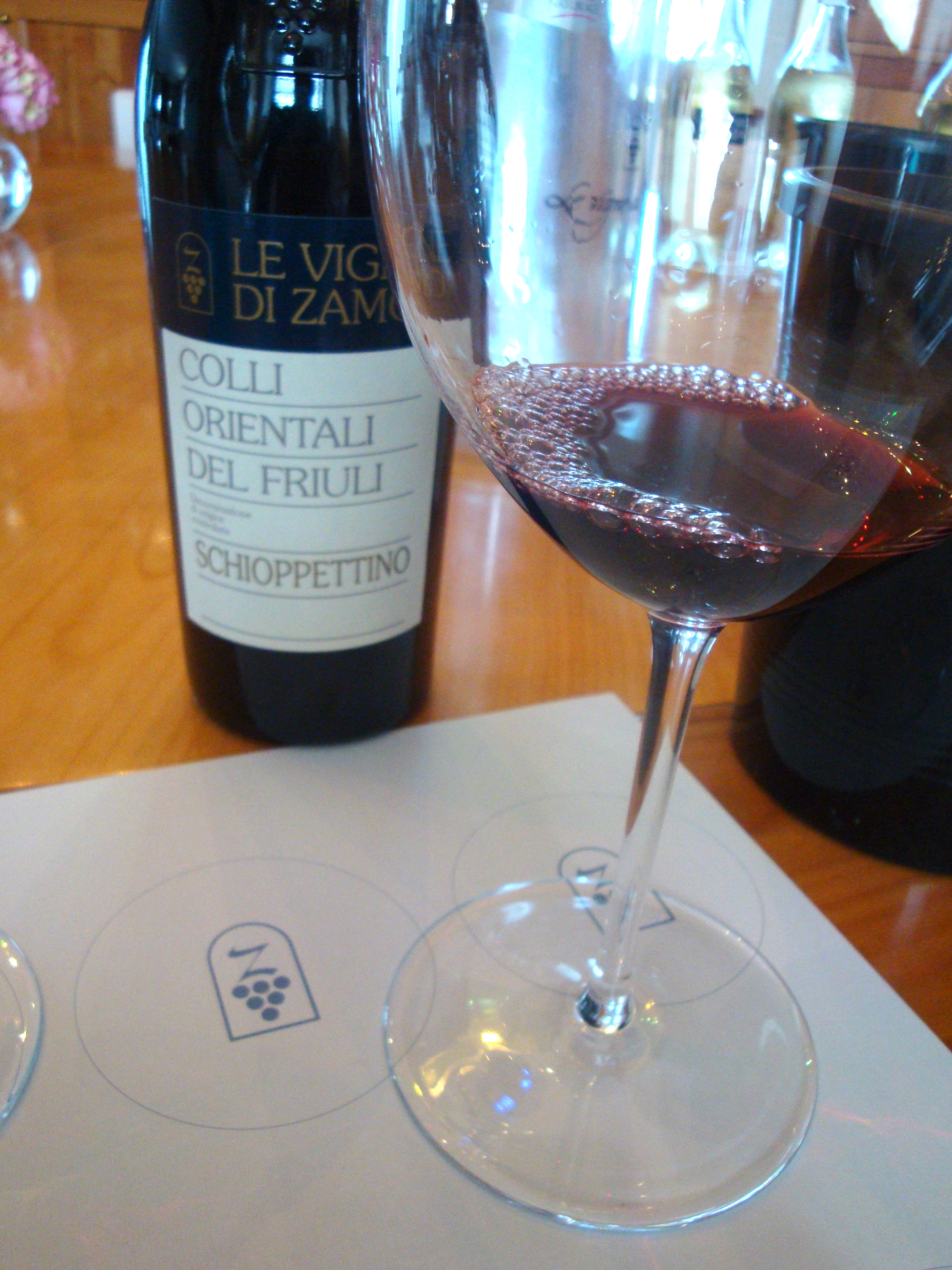
A grape variety that nearly went extinct in the 1970s, Schioppettino has undergone a great revival to become one of Friuli’s major red grapes. Zamò’s Schioppetino had aromas of fresh berries and herbs, with a medium bodied palate of red fruits, black pepper and smoke. In my opinion this would be a great wine to go with charcuterie and grilled meats.
Ronco delle Betulle
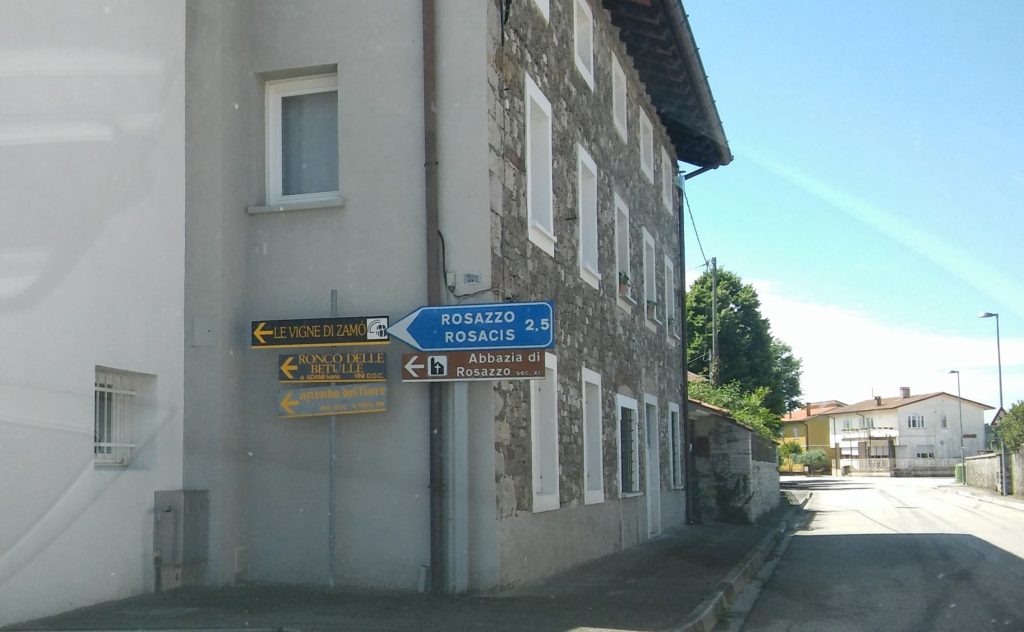
Just a stone’s throw from the Zamò winery is another leading winery from Colli Orientali called Ronco delle Betulle. With 17 hectares of land in the prestigious DOCG Rosazzo area, they produce close to 70.000 bottles of wines annually, and can well be called a “boutique” winery.
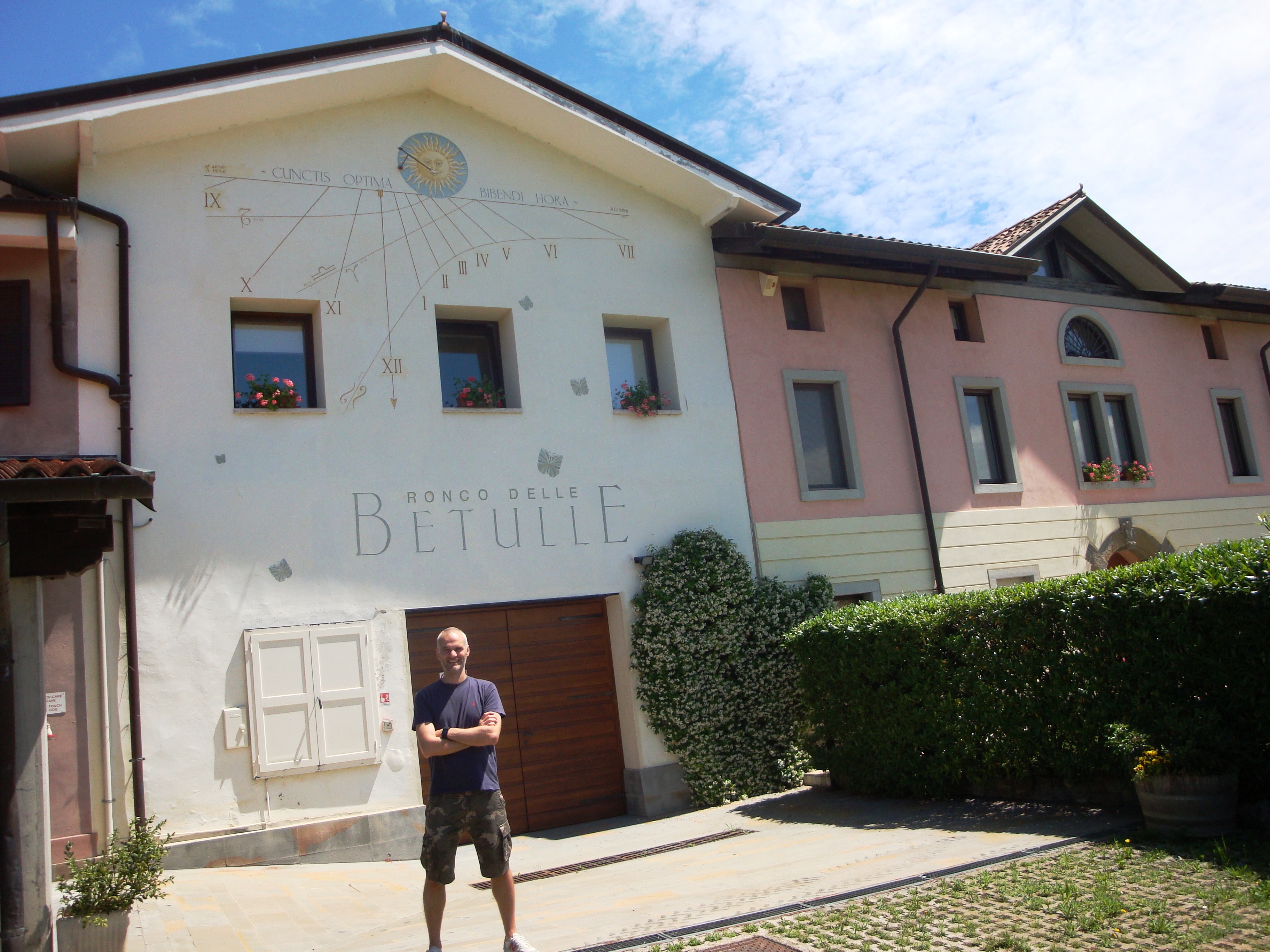
The Ronco delle Betulle winemaking history dates back to 1967, with their forefather Giovanbattista Adami’s deep love for his land. Today his legacy is carried forward by his daughter Ivana and her son Simone Sechi who hosted us at the winery.

Ronco delle Betulle has an interesting portfolio of wines that include native as well as international varietal wines and some unique blends.
Ronco delle Betulle Friulano DOC Friuli Colli Orientali
A delicate wine with floral aromas and a medium bodied palate of stone fruits and bitter almonds.
Ronco delle Betulle Ribolla Gialla DOC Friuli Colli Orientali
A pristine wine with somewhat restrained aromas that blossomed in the glass with citrus and tree fruit notes, ending on a mineral finish.
Ronco delle Betulle Refosco dal Peduncolo Rosso DOC Friuli Colli Orientali
A deep ruby red wine with aromas of red berries, mixed herbs and smoke. It had a full bodied palate with red berry flavours accented with coffee notes.
Drinking like the Locals
Wine is so deeply ingrained in the cultural fabric of “old-world” countries like Italy that it is a way of life rather than an occasional indulgence. Hence it is not only about big brands and global businesses but a widespread prevalence of local winemakers who cater to the nearby population . Once again, thanks to my host Edoardo, I could get a first hand feel of how locals from the region buy and drink their wine on a daily basis.
Gianni Rossetto is a local farmer near Udine who also produces wine apart from other agricultural produce. His is a perfect example of sustainability in the vineyard- a big buzzword of our times that is quite simple to follow if we are in tune with Mother Nature.
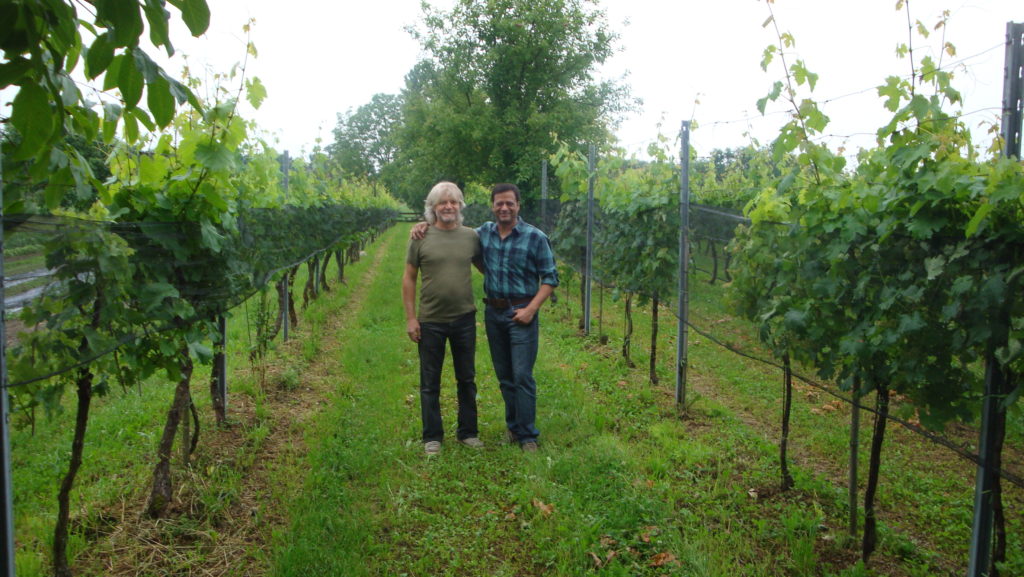
In Gianni’s part owned-part rented land, he cultivates grapes and other agricultural produce using traditional and modern means. Apart from owning a tractor, he also owns horses to support his various functions.
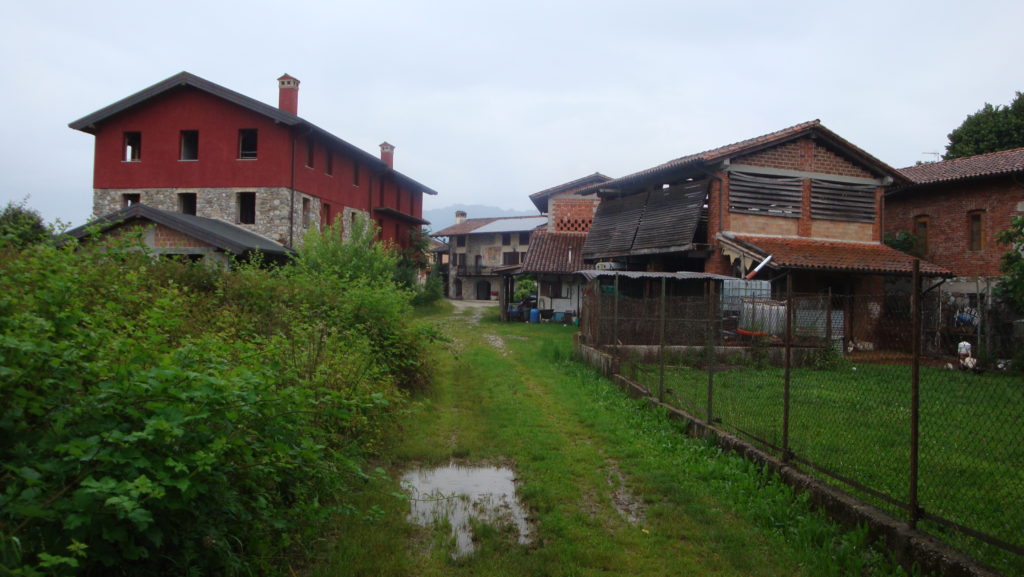
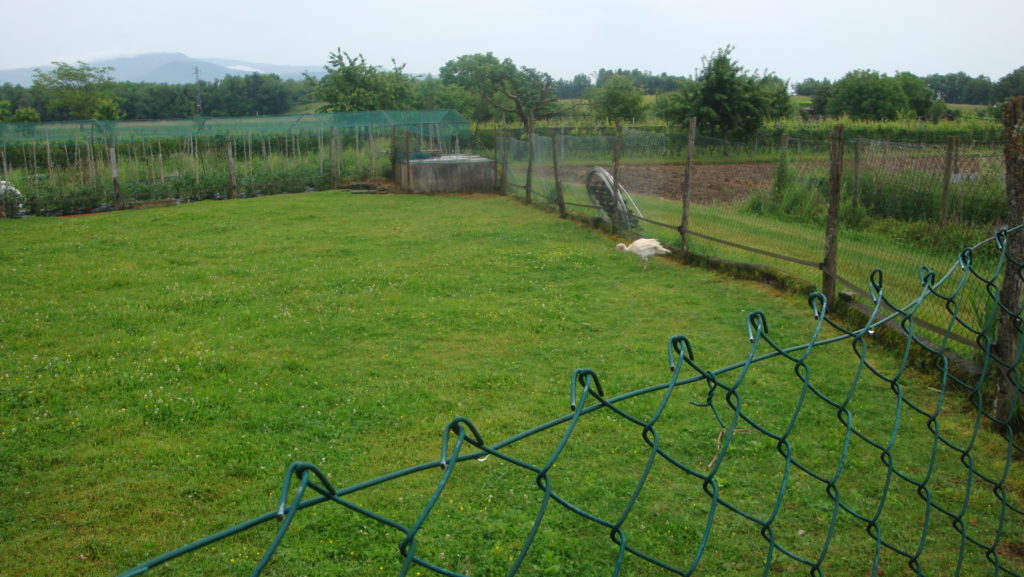

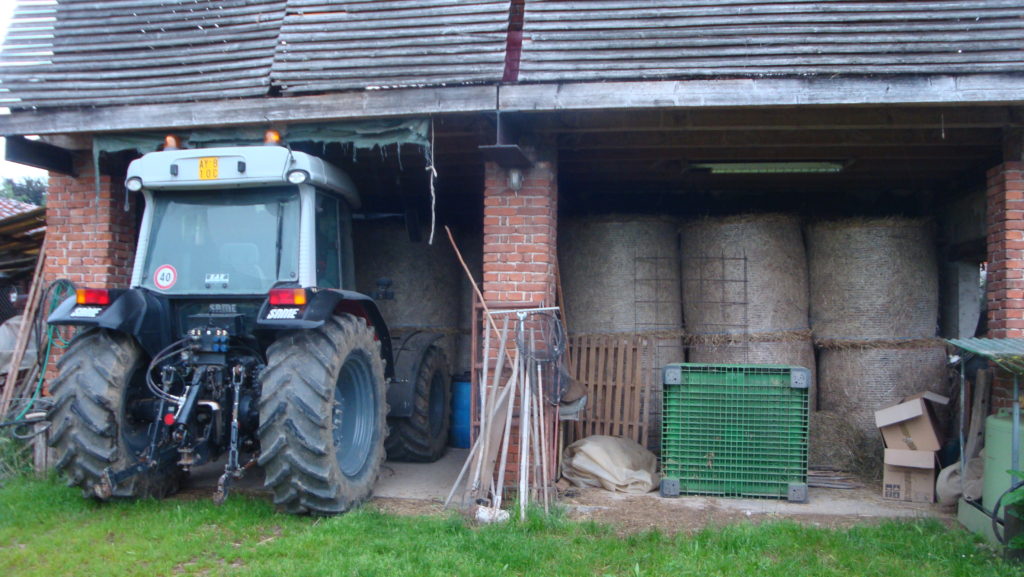
Neat vineyard rows neighboured by fruit bearing trees, vegetable beds and free ranging poultry in separate enclosures are easily noticeable in his farm. Such a diversity of flora and fauna help Gianni to produce his wines with minimal intervention.
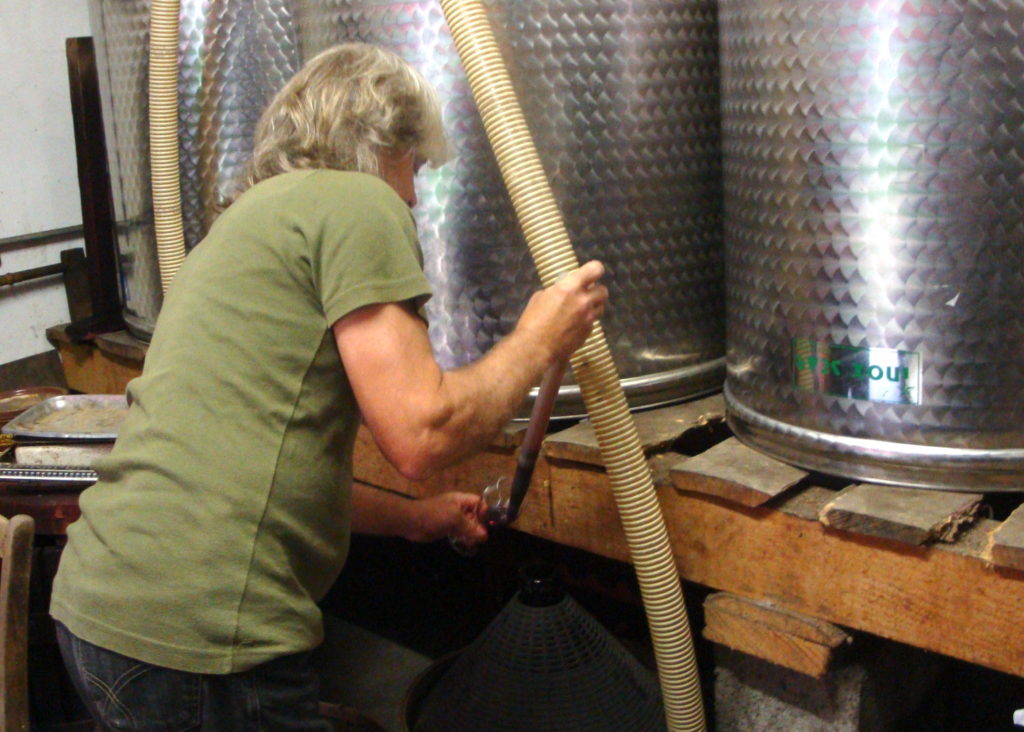
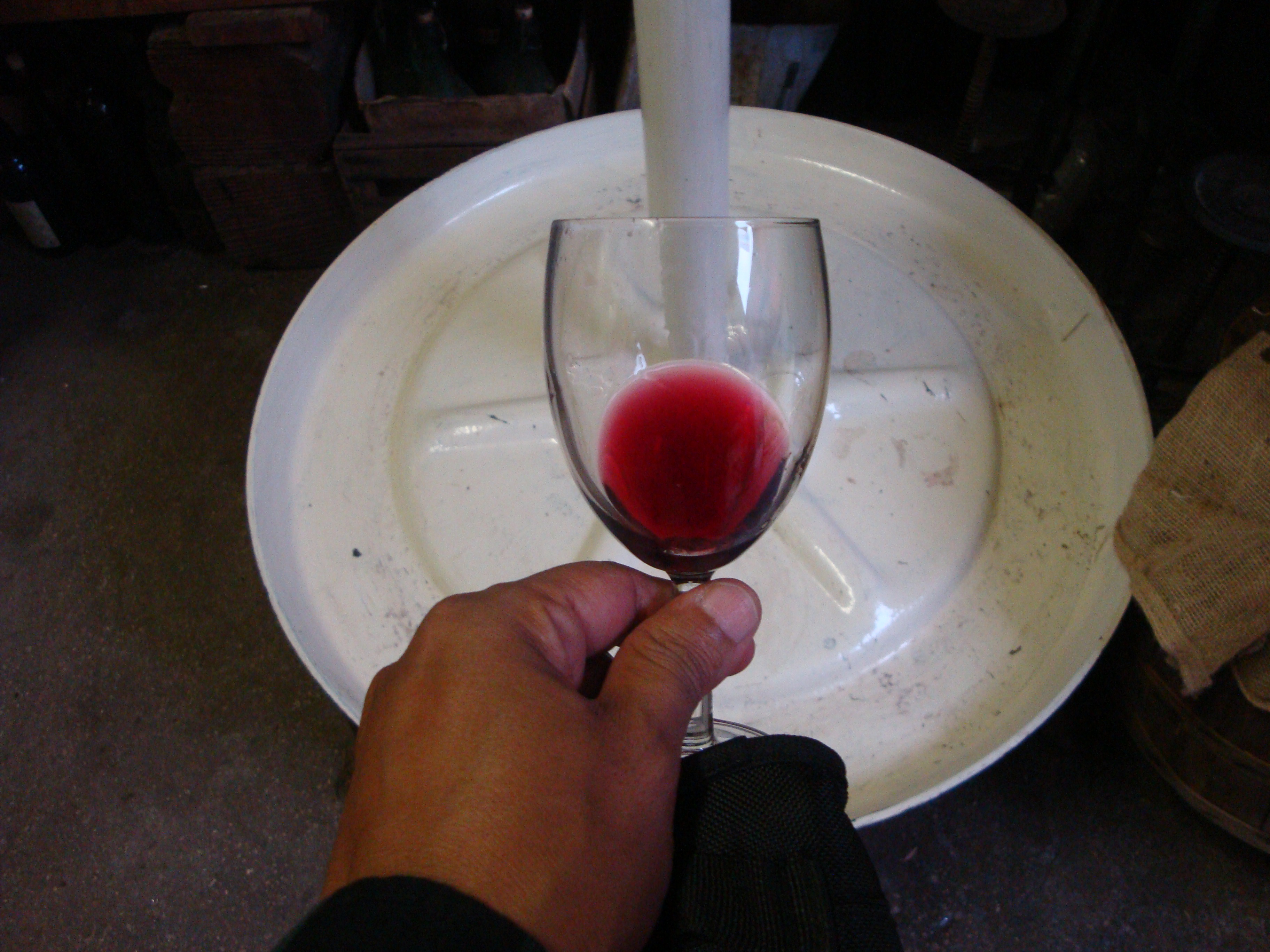
I tasted a couple of Gianni’s wines and was thrilled to notice their freshness and expressiveness in terms of aromas and flavours. At the time of my visit he was producing two red wines- a 100% Cabernet Sauvignon and a blend of Franconia (Blaufränkisch), Merlot and Refosco. He also makes a sweet wine made from Verduzzo grapes.
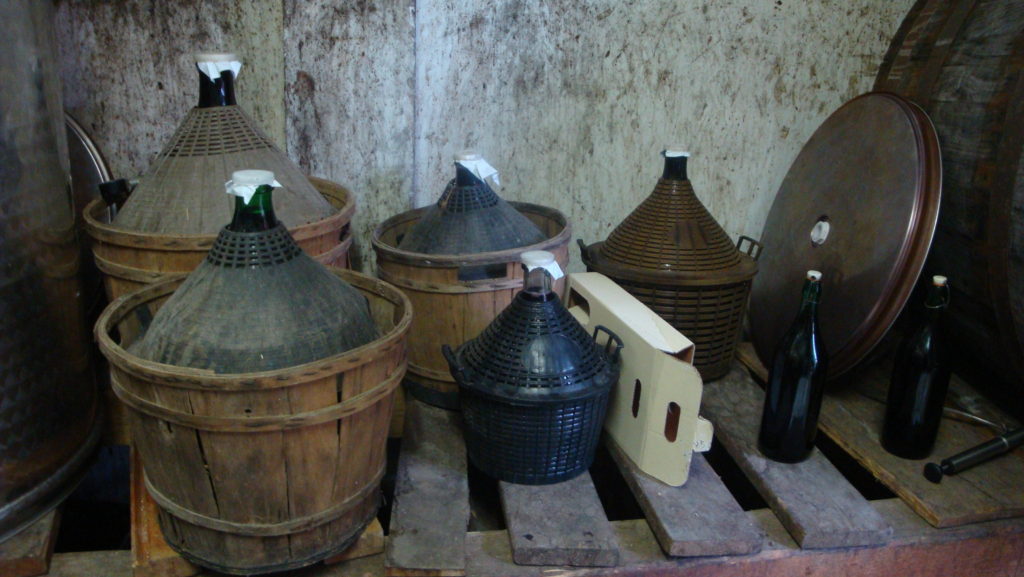
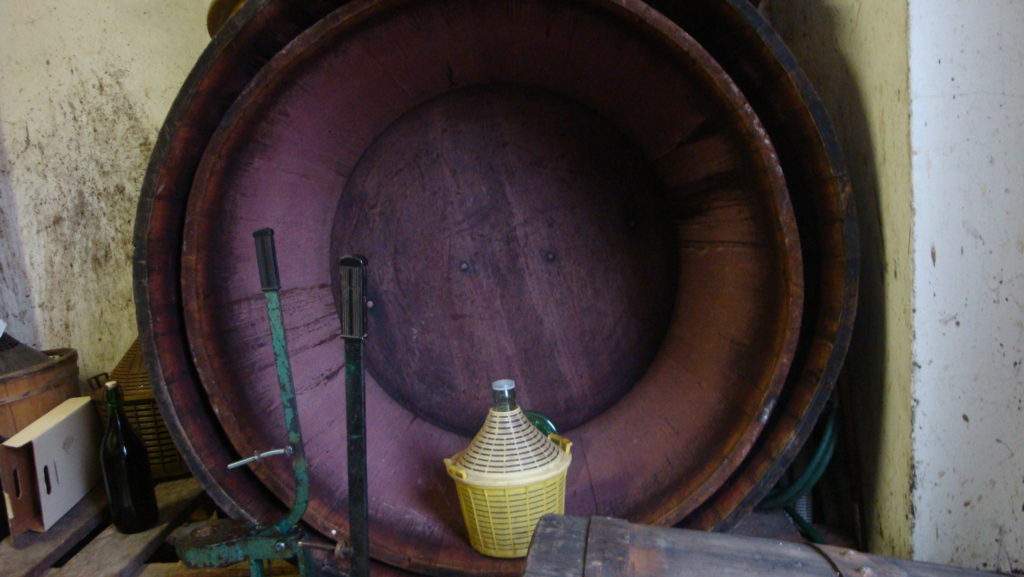
His wines can be carried home by the locals in their own flasks, much like we carry milk from a local dairy.
But Gianni also bottles his wines for those who would like to carry it that way. The prices of his wines range from EUR 1.80 to 2.50 sold open or 2.50 to 3 in a bottle.




